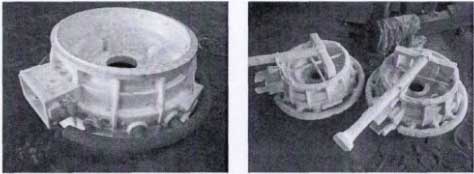Influencing factors of sand sticking defects of castings: unreasonable chemical composition of casting coatings; Insufficient fire resistance; Insufficient coating thickness; The strength of casting coating binder is insufficient.
The influencing factors of subcutaneous porosity defects in castings are: the coating layer is too thick and the drying is not enough; The coating has too strong permeability and insufficient drying; Excessive binder of casting coating; The moisture absorption of casting coating is too high. Influencing factors of surface roughness defects of castings: insufficient thickness of casting coating; Improper viscosity of casting coating; Improper Baume degree of casting coating; The casting coating is contaminated by sand mold or poorly dispersed casting coating.

The influencing factors of brush marks on the surface of castings are as follows: the viscosity of casting coating is too high; The leveling property of casting coating is too poor; The coating is too thick at one time.
The coating thickness has a dual trend to the casting defects. The thicker the casting coating is, the better. For the specific effects of different casting coatings, the best value should be obtained; For the surface brush mark defect core, after the coating operation, the leveling property of the coating attached to the core will gradually decrease with the extension of the placing time, and the brush mark will be left when it is painted to a certain extent. The period when the leveling property of the coating meets the requirement that no brush marks are left during the coating operation is usually called the coating operable time. The treatment time of the surface brush marks shall be within the coating operable time.
